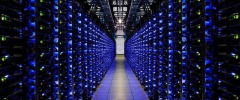AI data centers, due to their insatiable demand for electricity and more importantly, due to the vast financial resources of their owners, threaten to upend the operations, regulation and financial basis of the electric utility networks. That is not hyperbole. A new administration that distrusts regulation and is heavily influenced by a Silicon Valley that advocates breaking things, may speed the process.
Let’s step back. Five years ago we wrote a paper which said that electricity sales growth would resume, that the electricity industry was not prepared, and that the incumbent electricity industry might not benefit from the rise in demand — somebody else might.
Next, back to basics. Regulation of public utilities involves an implied two step process: 1) the city or state grants the utility a monopoly or franchise and 2) in return the utility corporation agrees to service levels, capital controls, and other measures to prevent customer abuse. The prospective AI power plant developer, as a free agent has no legal obligation to the utility or the utility’s customers. And we think it is almost inevitable that the data centers and utilities will end up in a big legal squabble. We expect the AI folks, as large power generators, will try to shift costs over to the utility and its customers, in what we call cross-subsidization. The AI-led power plants represent an enormous incremental base load addition that has to be physically accommodated up and down the transmission and distribution system. Someone will have to pay for all these utility upgrades. Should small residential and commercial customers pay higher utility bills simply because an AI facility is located in their service area and requires extremely expensive system upgrades?
Related: Indian Oil Probes Allegations of Albemarle Bribes to State Firm’s Officials
The utility-regulatory model is a scarcity model (which presumes investment capital is scarce or expensive). Regulators allocate resources and expenses among competing customer classes—all of whom want cheap electricity. The AI/data center trend upends these traditional relationships between government, corporations, and customers for several reasons: 1) their margins are high enough that, unlike typical industrial customers, they are relatively price insensitive, 2) they have the size and sophistication to own and operate multiple generating stations, 3) and they have large balance sheets, with cost of capital advantages, and virtually unlimited access to capital. And it is this last point gives them an enormous competitive advantage. Tech giants can finance their new generating plants, assuming 100% debt financing, for less than half of what it would cost an investor owned utility. Competitive disadvantages of that magnitude are literally insurmountable.
The disparities are mind-boggling. The top five AI players have sales of $1.76 trillion, net profit of $0.384 trillion, cash balance of $ 0.433 trillion, and free cash flow of $0.345 trillion. That is three times the sales, six times the profit and twenty times the cash balance of the entire electric industry. (No point making a free cash flow comparison because the electric industry does not generate any free cash flow.
Assuming a new power plant costs $3 billion, about 20% of total construction expense is typically dedi





